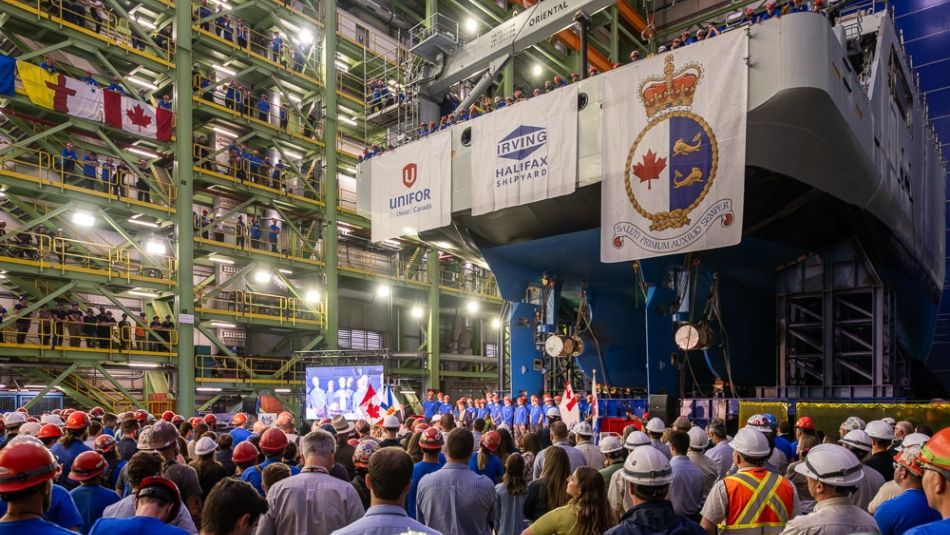
Share
(This editorial was originally published in the online and print editions of The Hill Times on Wednesday, August 21, 2024)
By all accounts and despite the enormous challenges it had to overcome, Canada’s National Shipbuilding Strategy (NSS) should be regarded as a resounding success and a model for future procurement efforts.
By the mid-2000s, shipbuilding costs around the world had skyrocketed, much of the technical skills needed to build ships in Canada had been hollowed out, and aging or mothballed shipyard installations across the country were ill-prepared to support production of the next generation of fleets.
Since the Harper government launched the program in 2010, the NSS has revived an industry that was in terminal decline and nearly singlehandedly recovered the lost art of shipbuilding in Canada. The NSS now supports over ten thousand good paying, mostly unionized jobs across the country, while delivering incalculable spinoff benefits to the rest of the economy, generating billions of dollars in GDP.
Nowhere has this been more apparent than in Nova Scotia, where Irving Shipbuilding’s Halifax Shipyard supports the livelihoods of more than 1,100 members of my union, Unifor, represented by Marine Workers’ Federation (MWF) Local 1.
In recent years, however, the NSS has faced withering criticism, with much of the negative attention directed at challenges associated with the Canadian Surface Combatant (CSC) program.
Critics mainly claim – without evidence – that inflation-affected costs and adjustments to delivery timelines on the most complex domestic procurement we’ve ever undertaken wouldn’t be faced with ‘off-the-shelf’ vessels built overseas.
Workers have heard this argument before and, as a union leader, I have witnessed the job losses and economic devastation caused by this hollow and unproven line of thinking.
Claims that Canada will be better off if it opts for overseas imports are rooted in the kind of logic that gutted our manufacturing base during the 1980s and 1990s and led directly to the predicament we found ourselves in during the COVID-19 pandemic, when our dependence on fragile global supply chains quickly revealed its limitations.
The logic of offshoring also fundamentally fails to account for the many intangible benefits of a robust domestic industrial capacity and good union jobs.
The Conference Board of Canada’s assessment is that the Halifax Shipyard alone is expected to deliver a total of $3.7 billion in revenue to all three levels of government between 2013 and 2025. That’s money we’d never see back if we shopped for ships overseas.
We also wouldn’t see the community-building and advancements toward equity we’re witnessing today.
The Unifor-supported Pathways to Shipbuilding program has been highly successful in removing barriers to shipbuilding employment for underrepresented communities while significantly boosting the number of skilled trades workers. As a result, Unifor MWF Local 1 now represents the largest number of trades apprentices in Atlantic Canada at a time when the whole country is facing intense demand for skilled tradespersons.
There are other reasons to be skeptical of anyone’s argument that relies on a purely short-term economic calculus when weighing the benefits offered by the NSS. For one, all of Canada’s G7 allies have their own naval shipbuilding programs, as do smaller seafaring countries, including the Netherlands and Denmark – and for good reason. There is a clear national security rationale for preserving the capacity to build and maintain one’s own warships, in addition to the logistical advantage of being able to build ships to meet unique defence requirements.
Not only would abandoning the NSS mean tens of thousands of valuable jobs lost, offshoring our shipbuilding industry would render us wholly dependent on a foreign power’s ability to deliver vessels on time and on budget (F-35s, anyone?).
There are ample cases of failed offshore procurement that left Canada with vehicles unsuitable for our environment and use cases, including the 139-car Renaissance fleet that Canada purchased for VIA Rail from U.K.-based Metro-Cammell in 2000. I worked for VIA Rail at the time, and I can tell you just how woefully inadequate for our climate these railcars were. The railcars also failed to meet basic accessibility requirements requiring extensive modifications to resolve.
So, let’s pass on the critics’ napkin math and choose instead to invest in ourselves with more homegrown procurement that creates good jobs, delivers needs-based equipment, and provides incalculable benefits for our communities for generations to come.


